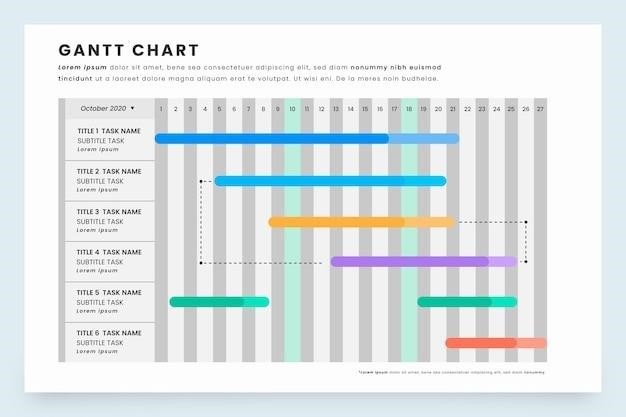Transposition Charts⁚ A Comprehensive Guide
Transposition charts are essential tools for musicians who play transposing instruments. These charts provide a clear and organized way to understand the relationship between the written notes on a musical score and the actual pitches produced by an instrument. This guide will delve into the various aspects of transposition charts, covering their purpose, types, usage, and benefits. We will also explore popular transposition chart PDFs available online, offering you valuable resources to enhance your musical understanding and proficiency.
What is a Transposition Chart?
A transposition chart is a visual representation that helps musicians understand the relationship between the written notes on a musical score and the actual pitches produced by a transposing instrument. Transposing instruments, such as the clarinet, trumpet, and saxophone, play at a different pitch than what is written on the sheet music. This means that a musician playing a transposing instrument needs to adjust the notes they play to match the intended pitch of the piece.
A transposition chart serves as a guide to navigate this adjustment process. It typically lists various transposing instruments along with their corresponding written notes and the actual pitches they produce. For instance, a chart might show that a note written as “C” on a Bb clarinet will actually sound as “Bb” when played. These charts can be invaluable for musicians who are learning to play a transposing instrument or need to transpose music for a different instrument.
Transposition charts are particularly helpful in ensemble settings where musicians with different instruments need to play together in harmony. By using a transposition chart, musicians can ensure that they are playing the correct pitches to create the desired sound. These charts simplify the process of transposing music, allowing musicians to focus on their performance instead of struggling with complex calculations.
Types of Transposition Charts
Transposition charts come in various forms, catering to different needs and musical contexts. Some common types include⁚
- Instrument-Specific Charts⁚ These charts are tailored to a particular instrument, such as a clarinet, trumpet, or saxophone. They typically list the written notes for that instrument and their corresponding sounding pitches. This type of chart is ideal for musicians who are learning to play a specific transposing instrument.
- Key-Specific Charts⁚ These charts are designed for transposing music to a particular key. They typically list the notes in the original key and their corresponding notes in the transposed key. This type of chart is useful for musicians who need to transpose music for different instruments or for performing in different keys.
- General Transposition Charts⁚ These charts provide a comprehensive overview of transposition for various instruments and keys. They often include a table listing common transposing instruments and their respective transposition intervals. This type of chart is useful for musicians who need to work with a wide range of instruments and keys.
- Capo Transposition Charts⁚ These charts are specifically designed for guitarists who use a capo to change the key of a song without having to relearn the chords. They typically list the chord shapes for different keys and the corresponding capo positions that will produce those keys.
The choice of transposition chart depends on the specific needs of the musician. Instrument-specific charts are ideal for learning to play a transposing instrument, while key-specific charts are useful for transposing music for different instruments or keys. General transposition charts offer a more comprehensive overview, while capo transposition charts are specifically designed for guitarists using a capo.
Using a Transposition Chart
Utilizing a transposition chart is a straightforward process that empowers musicians to confidently navigate the complexities of transposing instruments. Here’s a breakdown of how to effectively use a transposition chart⁚
- Identify the Instrument⁚ Determine the instrument you are transposing for. This will guide you to the correct section of the transposition chart, focusing on the specific instrument’s transposition intervals.
- Locate the Written Note⁚ Find the written note in the original score that you want to transpose; This note is the starting point for your transposition.
- Determine the Transposition Interval⁚ Consult the transposition chart for the instrument in question. Find the written note you identified and locate its corresponding transposition interval. This interval tells you how many half steps the written note needs to be shifted to produce the correct sounding pitch on the instrument.
- Transpose the Note⁚ Apply the transposition interval to the original written note. If the interval is a major third (four half steps), move the original note up four half steps on the musical staff. If the interval is a minor sixth (eight half steps), move the original note down eight half steps.
- Repeat for All Notes⁚ Repeat steps 2-4 for every note in the original score to create the transposed version of the music.
Remember to consider the clef used for the instrument when applying the transposition interval. A transposition chart will typically provide a clear visual representation of the intervals, making the process of transposition effortless. With practice, reading and using a transposition chart becomes second nature, allowing musicians to seamlessly adapt music for various instruments and keys.
Transposing for Different Instruments
Transposition charts excel in simplifying the process of adapting music for various instruments. Each instrument possesses its unique transposition characteristics, dictating how its written notes differ from the actual sounding pitch. A transposition chart acts as a comprehensive guide, outlining these specific transpositions for a wide array of instruments.
For instance, a clarinet in Bb transposes a major second (two half steps) down, meaning that a written C will sound as a Bb. Similarly, a trumpet in Bb transposes a major second (two half steps) up, rendering a written C as a D. A transposition chart will clearly display these intervals for each instrument, enabling musicians to effortlessly translate music written in concert pitch (the standard pitch for instruments like the piano) into the appropriate pitch for the targeted instrument.
The use of transposition charts becomes especially valuable when working with ensembles consisting of both transposing and non-transposing instruments. By consulting the chart, musicians can ensure that their parts are correctly transposed, allowing for harmonious and accurate performances. The chart serves as a reliable reference, eliminating the need for complex calculations and facilitating seamless transitions between different instruments.
Transposing for Different Keys
Transposition charts also prove invaluable for adapting music to different keys. Often, musicians need to change the key of a piece to suit a vocalist’s range or to match the tonality of an accompanying instrument. While this process can seem daunting, transposition charts offer a straightforward solution.

When transposing for a different key, the chart serves as a visual aid, revealing the intervallic relationships between the original key and the desired key. For example, if a piece is written in C major and needs to be transposed to G major, the chart will show that a perfect fifth (seven half steps) needs to be added to each note. This means that a C will become a G, a D will become an A, and so on.
Transposition charts often incorporate key signatures, making the process even more intuitive. By aligning the original key signature with the desired key signature on the chart, musicians can readily identify the necessary adjustments for each note. This visual representation eliminates the need for complex theoretical calculations, making the transposition process efficient and error-free.

Benefits of Using Transposition Charts
Transposition charts offer numerous benefits for musicians of all levels, streamlining the process of playing music with different instruments and in various keys. Here are some key advantages⁚
Firstly, transposition charts provide a visual reference, making it easier to understand the relationship between written notes and actual pitches. This visual aid simplifies the process of transposing music, eliminating the need for complex theoretical calculations. Musicians can quickly identify the corresponding notes on their instrument, ensuring accurate and efficient transposition.
Secondly, transposition charts eliminate the need for memorizing complex transposition rules. Instead of relying on theoretical knowledge, musicians can simply refer to the chart, making the process more accessible and less prone to errors. This is particularly beneficial for beginners who are still developing their understanding of musical theory.
Thirdly, transposition charts enhance collaboration among musicians. By using a shared reference point, musicians playing transposing instruments can easily communicate and coordinate their parts, ensuring a cohesive and harmonious performance. This facilitates ensemble playing, allowing musicians to adapt to different musical contexts with ease.
Popular Transposition Chart PDFs
The internet offers a wealth of resources for musicians seeking reliable and readily available transposition charts. Numerous websites and online platforms provide free downloadable PDF versions of transposition charts, catering to a wide range of instruments and musical needs. These readily accessible PDFs serve as valuable tools for musicians, offering a convenient and portable reference guide for practicing and performing.
One popular resource is the “Instrument Transposition Chart” available on various music theory websites. This comprehensive chart outlines the transposition intervals for a wide array of instruments, including woodwinds, brass, and even some less common instruments. It provides a detailed overview of the written notes and their corresponding sounding pitches, making it an ideal resource for both beginners and experienced musicians.
Another popular PDF is the “Key Transposing Chart,” which offers a visual representation of key signatures and their respective transpositions. This chart is particularly helpful for musicians who need to transpose music into different keys, allowing them to quickly identify the appropriate key signatures and intervals. This resource is often used by composers, arrangers, and musicians who frequently work with different musical styles and genres.
These are just a few examples of the many transposition chart PDFs available online. Musicians can easily find additional resources by searching for specific instruments or musical contexts, ensuring access to the most relevant and helpful information for their needs.
Transposition charts are invaluable tools for musicians, particularly those playing transposing instruments. They serve as a bridge between written notation and the actual sounds produced by an instrument, simplifying the process of understanding and navigating transpositions. Whether used for practicing, performing, or composing, transposition charts empower musicians to confidently interpret musical scores and create harmonious performances.
By understanding the concepts outlined in this guide, musicians can effectively utilize transposition charts to enhance their musical understanding and proficiency. The availability of numerous free and readily accessible transposition chart PDFs further simplifies the process, providing musicians with valuable resources at their fingertips.
The use of transposition charts not only fosters musical accuracy but also fosters a deeper understanding of musical theory. Musicians who engage with these charts gain a comprehensive grasp of key signatures, intervals, and the relationships between notes and pitches, ultimately enriching their overall musical knowledge and skill.
Ultimately, the integration of transposition charts into a musician’s practice and performance routine is a testament to their dedication to musical excellence. These charts are not merely tools for technical accuracy but serve as a gateway to a richer understanding and appreciation of the complexities and nuances of music.



